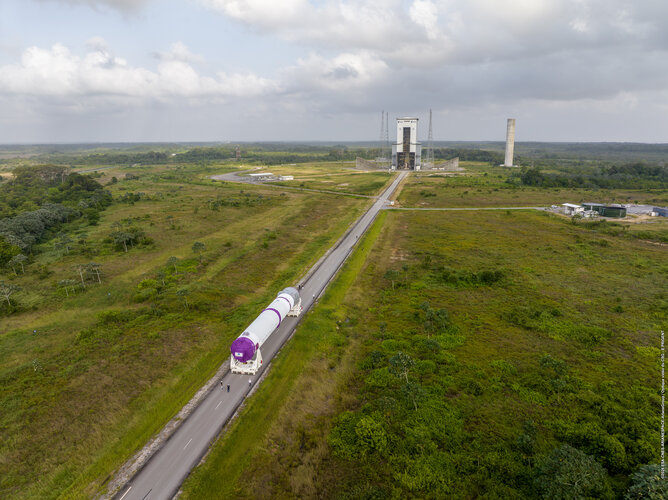
Copernical Team
Blue Origin could launch orbital rocket Thursday or Friday
 Blue Origin, the space company founded by billionaire Jeff Bezos, could attempt its first orbital launch Thursday morning, weather permitting, a spokesperson said.
The massive New Glenn rocket is seen as critical to Blue Origin's efforts to compete with Elon Musk's SpaceX, which dominates the commercial space industry.
But its inaugural mission has been delayed by several years.
Att
Blue Origin, the space company founded by billionaire Jeff Bezos, could attempt its first orbital launch Thursday morning, weather permitting, a spokesperson said.
The massive New Glenn rocket is seen as critical to Blue Origin's efforts to compete with Elon Musk's SpaceX, which dominates the commercial space industry.
But its inaugural mission has been delayed by several years.
Att SpaceX delays latest Starship megarocket test to Thursday
This request seems a bit unusual, so we need to confirm that you're human. Please press and hold the button until it turns completely green. Thank you for your cooperation!
Press and hold the button
If you believe this is an error, please contact our support team.
185.132.36.159 : b5a41914-5a2b-4d65-8c03-50d68484
Proba-3 becomes two: Satellites successfully separate
This request seems a bit unusual, so we need to confirm that you're human. Please press and hold the button until it turns completely green. Thank you for your cooperation!
Press and hold the button
If you believe this is an error, please contact our support team.
185.132.36.159 : 1231c821-2484-4651-895d-8faa65b7
Ariane 6 central core on the move
 Image:
Ariane 6 Central Core being transferred from the launcher assembly building to the launch pad
Image:
Ariane 6 Central Core being transferred from the launcher assembly building to the launch pad Technological ‘to-do list’ to reach Zero Debris created

There is an increasing willingness in the space sector to tackle the problem of space debris. Yet much of the required technology to mitigate or prevent its risks is still missing.
Preventing new debris, avoiding collisions and the timely clearance of satellites from orbit at their end-of-mission are complex challenges that each require a variety of practical solutions.
Released to the public on 15 January 2025, the Zero Debris Technical Booklet is a community-driven document that identifies technologies that will contribute to the goal of Zero Debris by 2030. Essentially, the Booklet forms a technical Zero Debris 'to-do list'.
Firefly looks to punch NASA moon ticket with overnight SpaceX launch
This request seems a bit unusual, so we need to confirm that you're human. Please press and hold the button until it turns completely green. Thank you for your cooperation!
Press and hold the button
If you believe this is an error, please contact our support team.
185.132.36.159 : 802fef5c-6b62-4284-ab4e-b5e24d5a
The best Milky Way map, by Gaia
 Image:
The best Milky Way map, by Gaia (artist impression)
Image:
The best Milky Way map, by Gaia (artist impression) The best Milky Way map, by Gaia (edge-on)
 Image:
The best Milky Way map, by Gaia (artist impression, edge-on)
Image:
The best Milky Way map, by Gaia (artist impression, edge-on) The best Milky Way animation, by Gaia
 Video:
00:02:05
Video:
00:02:05
This is a new artist’s animation of our galaxy, the Milky Way, based on data from ESA’s Gaia space telescope.
Gaia has changed our impression of the Milky Way. Even seemingly simple ideas about the nature of our galaxy’s central bar and the spiral arms have been overturned. Gaia has shown us that it has more than two spiral arms and that they are less prominent than we previously thought. In addition, Gaia has shown that its central bar is more inclined with respect to the Sun.
No spacecraft can travel beyond our galaxy, so we can’t take a selfie, but Gaia
Snooping science on the Moon

The European Space Agency (ESA) has signed its first exploration data buy agreement with Hungarian company Puli Space Technologies, whose neutron spectrometer will study water ice in the Moon's south pole region and provide the first direct surface measurements from a permanently shadowed crater. Through this partnership, ESA will obtain data from the spectrometer, which will fly on Intuitive Machines' second lunar mission.
